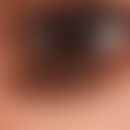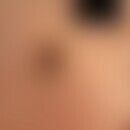Synonym(s)
HistoryThis section has been translated automatically.
DefinitionThis section has been translated automatically.
- Chronic cholestasis with pruritus (100% of patients)
- Typical facies (85%)
- Hypoplasia or stenosis of the pulmonary artery (84%)
- Butterfly deformity of the vertebral arches (63%)
- Posterior embryotoxone (76%)
- Xanthome (28%).
You might also be interested in
EtiopathogenesisThis section has been translated automatically.
Mutations in the NOTCH2 gene. NOTCH2 is a protein-coding gene. Diseases associated with NOTCH2 include Alagille syndrome 2 and Haydu-Cheney syndrome.
Clinical featuresThis section has been translated automatically.
Integument: Pruritus, xanthomatosis ( xanthomas are observed on palms and fingers, elbows, groin region and popliteal fossa, and buttocks).
Extracutaneous manifestations: Cholestasis within the first 3 months of life (normal colored or acholic stools). Hepatomegaly is always present. Bilirubin levels are not excessive (70-120 µmol/l), but extremely high cholesterol and lipid levels are found. Typical facies with prominent forehead, sunken eyes and mild hypertelorism as well as a small prominent chin. The so-called "posterior embryotoxon" is a white line 1-2 mm above the limbus corneae, which is found in 10% of all healthy individuals and 10% of all patients with cholestasis.
TherapyThis section has been translated automatically.
External therapyThis section has been translated automatically.
Radiation therapyThis section has been translated automatically.
Internal therapyThis section has been translated automatically.
Colestyramine (e.g. Colestyr from ct) 4-16 g/day p.o. In children weight-adapted dosage: adult dose x kg bw of child divided by 70.
Try non-sedating oral antihistamines such as levocetirizine (e.g. Xusal) 1 tbl. p.o. 1 time/day, Desloratadine (e.g. Aerius) 1 times/day 1 tbl. p.o. or sedating antihistamines such as clemastine (e.g. Tavegil) 2 times/day 1 tbl., dimetindene (e.g. Fenistil) 2 times/day 1 tbl. or hydroxyzine (e.g. Atarax) 1-3 tbl./day.
Progression/forecastThis section has been translated automatically.
LiteratureThis section has been translated automatically.
- Alagille D et al (1975) Hepatic ductular hypoplasia associated with characteristic facies, vertebral malformations, retarded physical, mental, and sexual development, and cardiac murmur. J Pediatr 86: 63-71
- Alagille D (1988) Paucity of Interlobular Bile Ducts. In: Waldschmidt J, Charissi G, Schier F (eds.) Cholestasis in Neonates. Zuckerschwerdt publishing house, Munich, S. 33-46
- Dufour JF, Pratt DS (2001) Alagille syndrome with colonic polyposis. At J Gastroenterol 96: 2775-2777
- Garcia MA et al (2005) Alagille syndrome: cutaneous manifestations in 38 children. Pediatric dermatol 22: 11-14
- Krantz ID et al (2002) Alagille syndrome: chipping away at the tip of the iceberg. At J Med Genet 112: 160-162
- Lykavieris P et al (2003) Bleeding tendency in children with Alagille syndrome. Pediatrics 111: 167-170
- Odievre M et al (1981) Long-term prognosis for infants with intrahepatic cholestatis and patent extrahepatic biliary tract. Arch Dis Child 56: 373
- Watson GH, Miller V (1973) Arteriohepatic dysplasia. Familial pulmonary artery stenosis with neonatal liver disease. Arch Dis Child 48: 459-466
Outgoing links (13)
Antihistamines, systemic; Clemastine; Desloratadine; Dimetinden; Haydu-cheney syndrome; Hydroxycin; Levocetirizine; Notch signaling pathway; Pruritus; Pruritus hepatic; ... Show allDisclaimer
Please ask your physician for a reliable diagnosis. This website is only meant as a reference.




